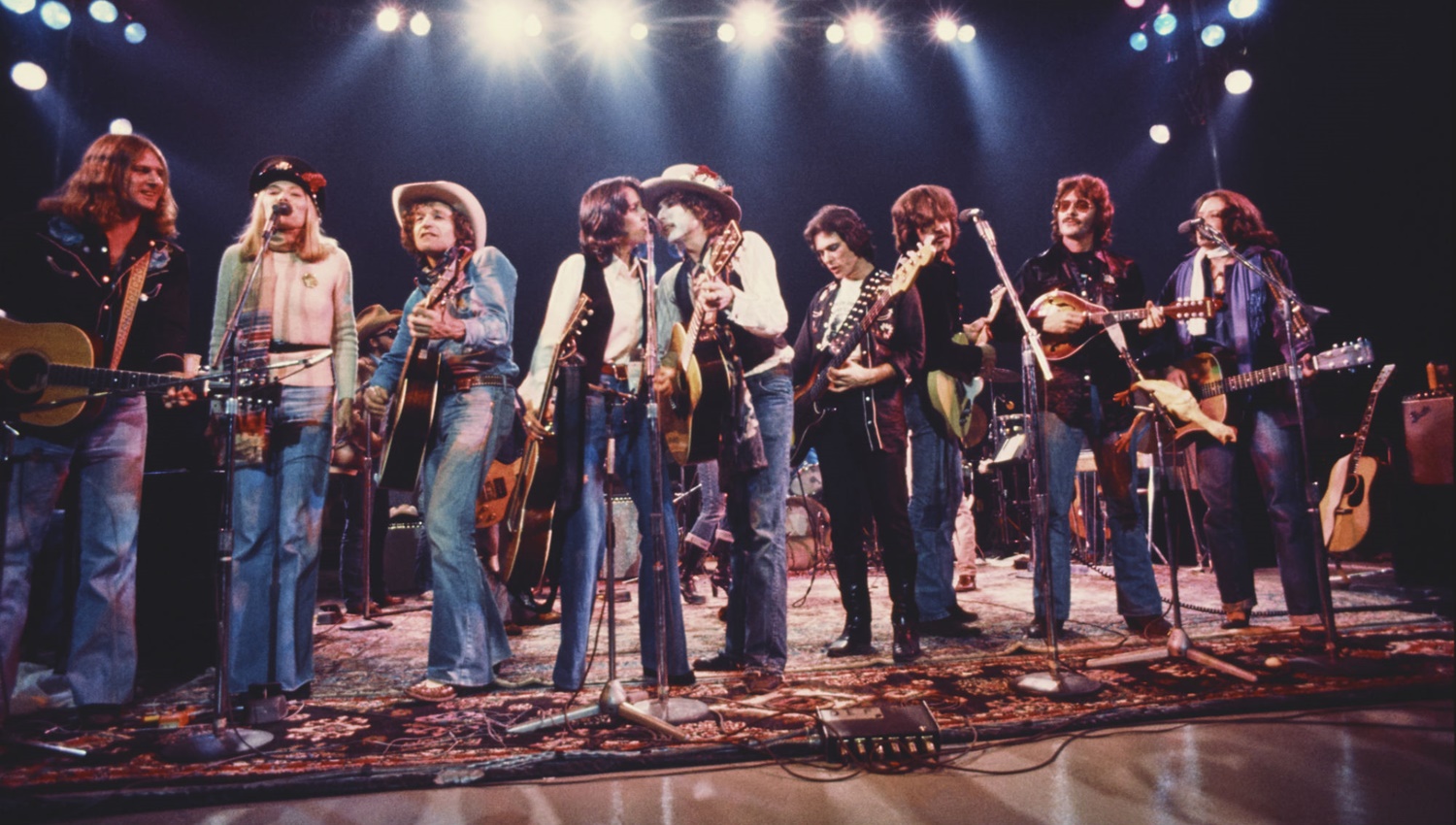
Rolling Thunder Revue
Dustin Chase
Devotees of Bob Dylan and his songs will likely be pleased with this special production by Martin Scorsese. There are many personal touches and background events that are likely to be new to many, and overall the film underscores the sociopolitical force that Dylan represents within a background of protests in America during his peak times of popularity. (For example, President Jimmie Carter would quote him in speeches, and the famous playwright Sam Shephard observes that “rock and roll is a kind of medicine for hard times”). Scorsese has included a large collection of songs that were gleaned from 57 concerts during Dylan and his band’s two “Rolling Thunder” tours in 1975 and 1976, a generous helping for fans of the music.
The Rolling Thunder tours did not become notable because of their box office; Dylan had in mind to play in smaller venues where he would have a more intimate connection to his audiences. And they were successful in that respect. As one taxi driver expressed after going for the first time to any concert, that he had never seen or thought about before the dynamic connection between the performers and the audience that he witnessed in a Rolling Thunder concert. But the promoter of the tour states outright that the investors lost money.
Many personal touches and background events that are likely to be new to many, and overall the film underscores the sociopolitical force that Dylan.
Dylan apparently thrived on chaos (or as Shephard expressed his own reaction, “a feeling of being alive”) and along the way, if the band was in a city where there was a major performer, he/she might be invited to perform, which happened to Joni Mitchell, who ended up staying with the tour for its last three performances. Dylan was so charismatic, that some would join/stay with the tour even if they weren’t performing. Two notable examples are the poet Allen Ginsberg (an accomplished dancer and aspiring singer) who, when he was cut out of the show stayed on as a baggage handler and the actress Sharon Stone (before she got famous, but after Dylan noticed her twice) joined the tour as a costume helper.
We get glimpses of Dylan’s interactions with others—his avoidance of answering questions as much as possible, his reticence in general, and in the words of the promoter, his keeping to himself. We also get vignettes related by band members like Joan Baez and colorful sword-carrying violinist Scarlet Rivera. In one intimate scene, Dylan is telling Baez how he was sorry she got married and left the band, to which she gently retorts that he got married first—without even telling her. But he has high praise for her, and we get a glimpse of her at some point dressing up and talking just like him as a joke.
Most enjoyable in the film are Bob Dylan’s abundantly performed story-songs—most familiar and some not so well known—that often leave you wondering exactly what they’re about, which says something about the enduring fascination with this life poet. Live recordings of the tour will be released on June 7 in a 14-CD boxed set.
Rolling Thunder Revue: A Bob Dylan Story by Martin Scorsese will appear in select theaters and on Netflix June 12.
Final Thought
A story well told by Scorsese, accompanied by generous helpings of Dylan songs and interesting background revelations.
